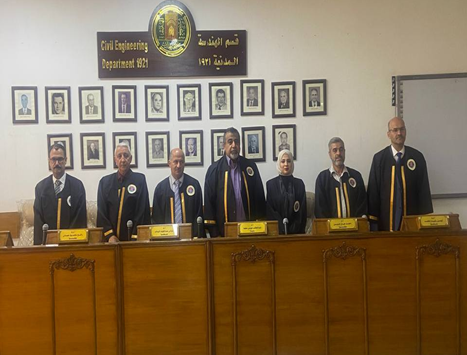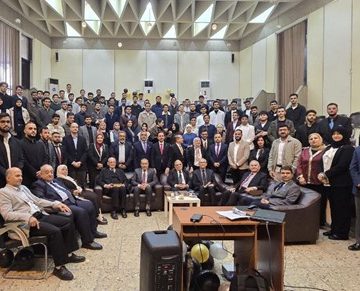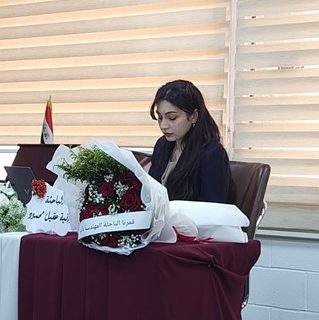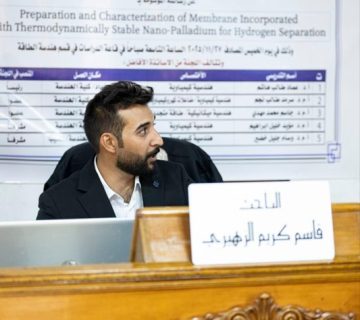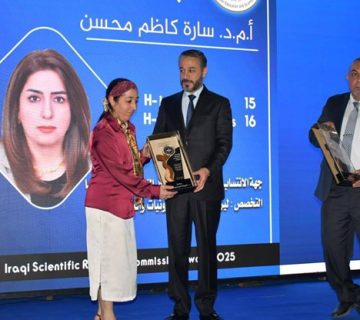The University of Baghdad witnessed the public discussion of the doctoral student (Fahad Mohammed Abdulkarim) from the Department of Civil Engineering for his thesis entitled (Performance of Concrete Composite Sections Reinforced with Glass Fiber Reinforced Polymer H-Shape and Bars Using Different Shear Connector). On Sunday 10 November 2024, in Professor Khaled Shaker Hall, under the supervision of Prof.Dr. Ali Hussein Ali Al-Ahmed,
The study aimed to introduces an experimental and numerical investigation about the effect of encasing Glass Fiber Reinforced Polymer H-section on the performance of simply supported composite beams subjected to static load conditions.
The main goals are studying the efficiency of encasing an H-shape on a rectangular concrete beam that is reinforced longitudinally with glass fiber-reinforced polymer rebars and transversally with steel stirrups.
This lead to encasing GFRP I-shape in reinforced concrete composite beams improved ultimate bearing capacity by 20% and decreased the maximum mid-deflection value by 9.8%. GFRP I-Section had a unique performance and superior advantages closely related during loading stages; it increased the ductility index and bending stiffness by 8.85% and 112%, respectively. Deflection computation resulted in a clear reduction ratio equal to 9.83% and 18.03% when used studs and C-channels bolted on the top surface of the GFRP beam, respectively. These values ranged about 21.3% and 26.3% when using C-channels on the two extreme surfaces, respectively. The interaction mechanism was engineered between the embedded GFRP and concrete and played a crucial role by using shear connectors on one surface with various techniques; it prevented the slippage failure on the beam. The recommending for future work include
- Studying the performance of GFRP reinforced concrete members under fire exposure.
- Observing the effects of high-strength concrete (HSC) subjected to impact loading on GFRP composite beams.
- Investigating the effect of openings presence of GFRP I-section on the behavior of this beam type subjected to dynamic and impact loads.
- Developing the numerical methodology represented in this dissertation in studying the response of the cases in the three recommendations above.
After the scientific discussion by the members of the discussion committee and listening to the researcher’s defense
The evaluation of the thesis grants the researcher a doctorate in structural engineering.


